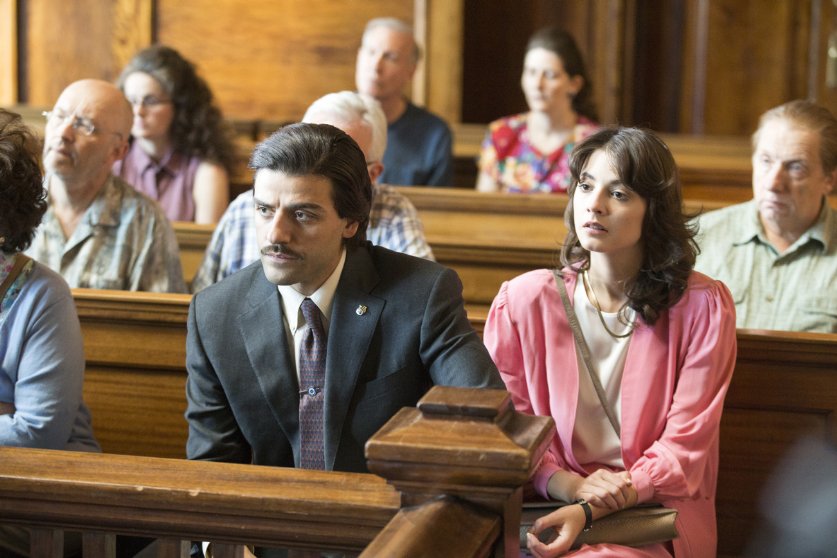
“Show me a hero and I will write you a tragedy,” F. Scott Fitzgerald said.
Political heroism certainly does have its costs. Our current election cycle–and past history–have made abundantly clear that playing into people’s fears of “the other” is politically advantageous. You can get popular suggesting we throw out the fourteenth amendment to the Constitution or that most illegal immigrants are rapists and murderers who should be deported. You can get elected promising to be tough on crime, promising “three strikes and you’re out,” and promising harsh mandatory minimum sentences. You can get elected trumpeting against “welfare queens,” regardless of how true the stereotype is.
When politicians validate our fears, they encourage us to consider that we the hearers are fundamentally good at heart. They urge us to regard the other as the corrupter of our fundamental goodness. They encourage even Christians to effectively reject original sin in themselves but affirm it in their neighbor. If you just tell people that they are right to fear “the other,” they will love you and make you successful. People will cheer loudly, not regarding the reality that your proposals might be expensive and unrealistic, not regarding that they will stoke violent hatred in some, not regarding the lack of empathy that such proposals include.
HBO’s miniseries Show Me a Hero (written and produced by The Wire‘s David Simon and directed by Paul Haggis) brings a zeitgeisty, everything-old-is-new-again political sensibility to us today in the era of #BlackLivesMatter. As so much of the white community has become reawakened to the current reality of civil rights violations against our African-American brothers and sisters, we are more ready than ever to learn about yet another dark chapter from the history of black-white relations. I watched this miniseries fresh on the heels of listening to the very important This American Life podcast, “The Problem We All Live With,” which deals with the one thing that helps inner city students better their performance: school integration. In this episode, we hear recordings of real (and recent) school board meetings full of raucous, angry white parents who cannot bear the idea that inner city black students would come to their white school. We hear parents convinced that the black students will bring crime and drugs, simply because they come from an underprivileged area (fears that do not come to fruition). We hear parents clueless about the fact that whites use drugs at about the same rate as do blacks (and if there is a group that uses them at a higher rate than the other, it’s whites). It’s not the black community that will bring drugs to the school; they’re already there, of course. Sin and brokenness are not outside the camp; they are already inside it.
In Show Me a Hero, nearly identical scenes to those in the This American Life episode play out at city council meetings in Yonkers, New York. The story centers around a Councilman who becomes Mayor Nick Wasicsko. Only 28 when he was elected mayor in 1987, Wasicsko is an unusual focal point for a film about racial injustice in America. In a normal historical drama like this one, the focal point would be NAACP attorney Michael H. Sussman or the courageous and beleaguered Judge Sand. You know the one. The long-suffering white guy (or gal) who has come to deliver black people–just as soon as he (or she) wins their trust! The white guy (or gal) who never wavers from his (or her) commitment to civil rights. The good guy (or gal)). Think Atticus Finch (at least until Set Me a Watchman came out) or teacher Louanne Johnson in Dangerous Minds.
But in this miniseries, Sussman and Sand are tangential characters, and Wasicsko is the focal point. Rather than neatly and deftly cleaning up history for us so that we can have our white savior while we munch our white, buttery popcorn, we get Wasicsko, a leader who is much more complicated in his relationship to civil rights–and yet also ultimately courageous.
As the miniseries begins, after forty years of intentionally segregated housing and schools, Judge Leonard Sand has handed down a ruling that new public housing (which was largely used by black and Hispanic residents) be built on the white, middle class side of Yonkers. New councilman Nick Wasicsko starts out opposed to the judge’s ruling and determined to challenge it all the way through the appeal court process. In fact, he ends up getting elected mayor precisely based on that position.
The angry white residents of Yonkers don’t want to give up until their dying breath. In fact, as Judge Sand continues to impose penalties on the City of Yonkers for refusing to obey his order, penalties that will bankrupt the city, lay people off from their jobs, and shut down city services, some residents still want to fight the court order out of sheer stubbornness. Wasicsko begins to see the writing on the wall, however. He realizes that resisting the judge’s order–even though he initially does not agree with it–is ultimately going to be bad for the City of Yonkers. Courageously, he begins to fight for the city council to go along with the judge’s order and stop resisting it.
In the midst of the melee, we see the impact of the housing situation on a number of secondary characters who live in public housing. We also see the bitter, raucous city council meetings. In the height of irony and lack of self-awareness, we see whites who are opposed to Judge Sand marching and chanting, “What do want? Justice! When do we want it? Now!” We see the weariness of the black community, a community who has just gotten used to the way things are. “We’re at the point where if they don’t want to live with us, why would we want to live with them?” says the tired Executive Director of the NAACP.












